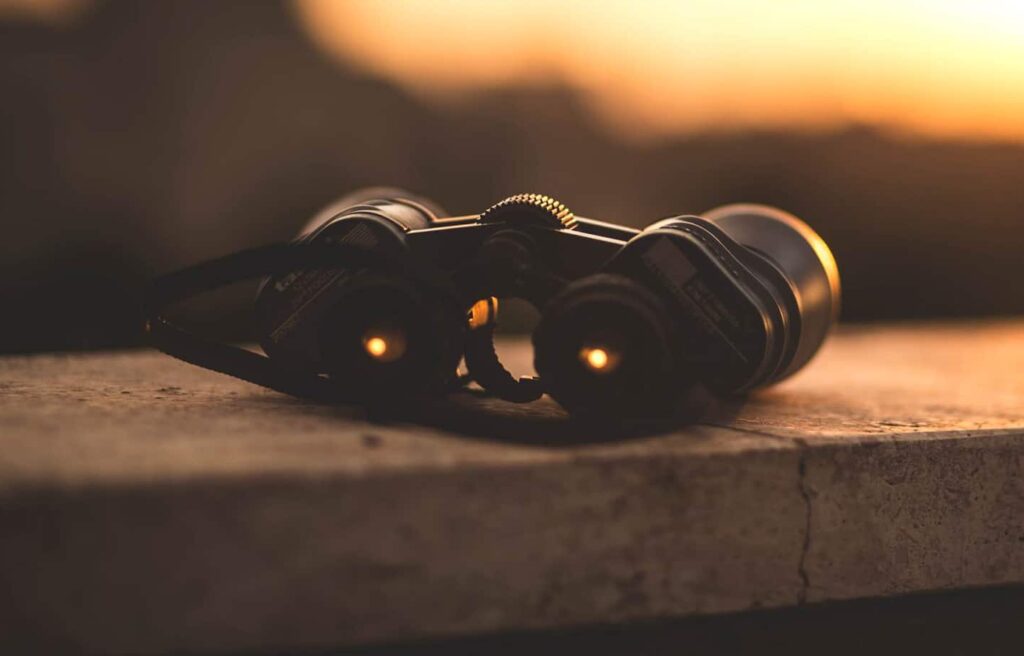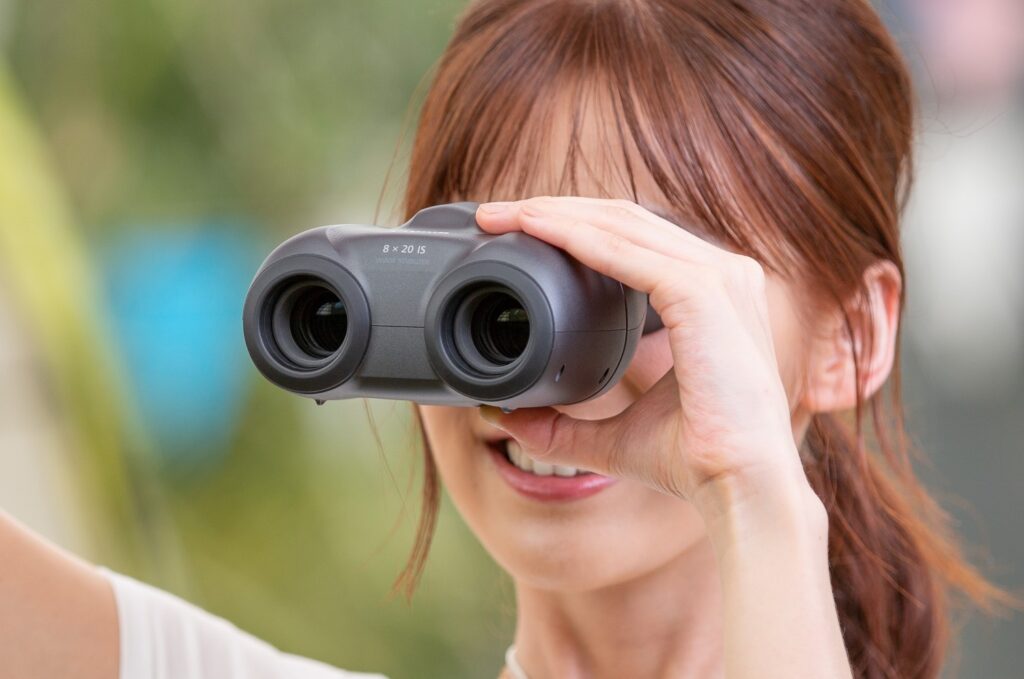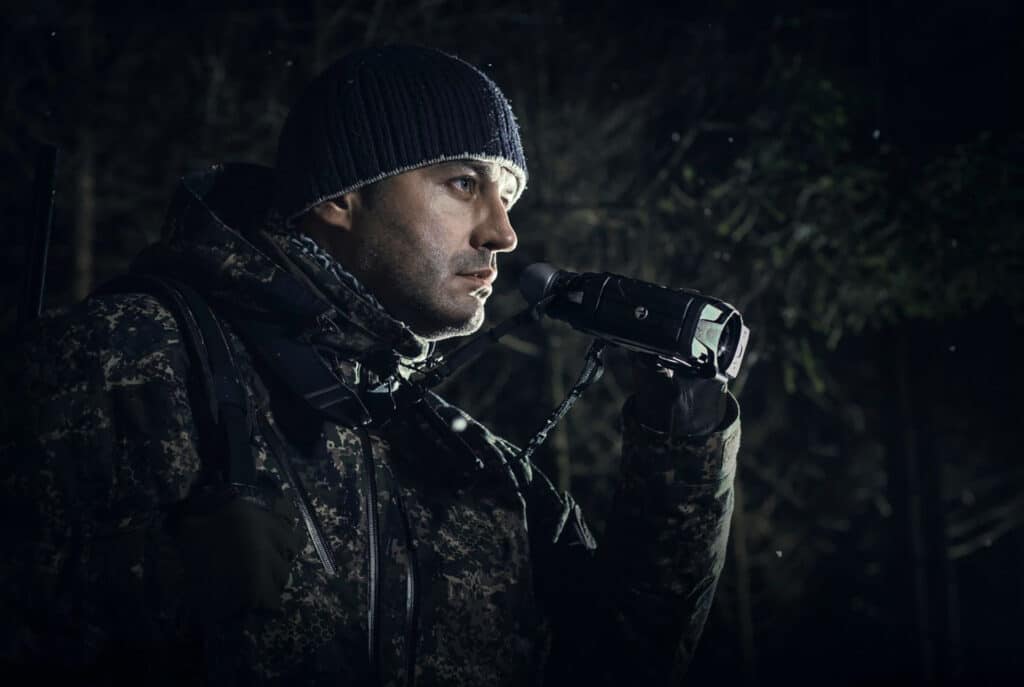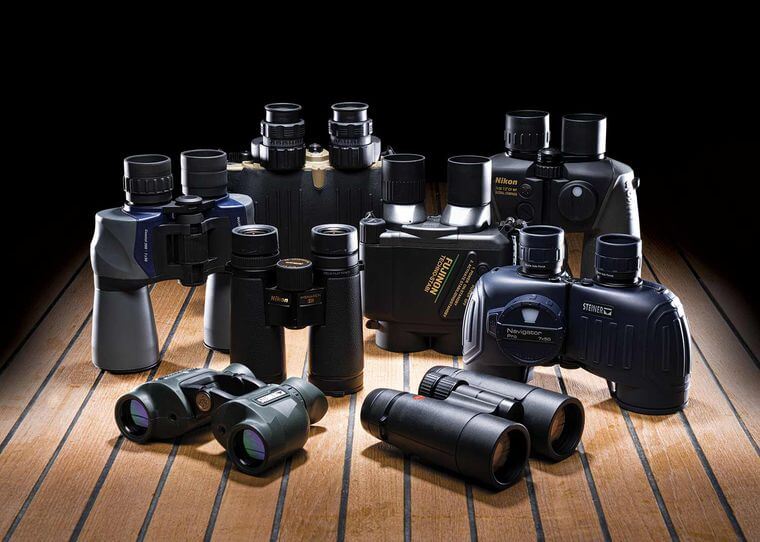

Higher magnification has always been preferred in hunting/stargazing/shooting binoculars, and as such, the 12×50 binos are an excellent pick. However, there’s such a wide variety of these binoculars that picking out a single option for purchase is challenging.
Thankfully, we examined different bino models in terms of optics, eye relief, the field of view, and other features that affect their effectiveness in the field and their suitability to potential buyers. We then used the results to curate a list of the best 12×50 binoculars, as shown below, and we highly recommend the binos listed to buyers.
Other features: fixed magnification, fast focus, waterproof and fogproof, tripod adaptable
The Celestron Granite is a roof prism pair of binos fitted with BAK-4 glass optics. In addition to the high refractive index, the glass also has extra-low dispersion capabilities, reducing chromatic aberrations and raising the overall image quality. Also worth noting is the 5.3° field of view, which is the widest on the list.
One of the key differentiators for these binos compared to other models is the quality of the optics. They’re multi-coated with a roof prism design and feature extra-low dispersion glass. Consequently, the image quality is one of the best for 12×50 hunting or sports binoculars. The field of view is also more extensive than what you get in most 12×50 binos.
Other features: center focus, waterproof and fogproof, fixed magnification
Another roof prism BAK-4 pair of binos to make it onto the list is the Leupold BX-4 Pro Guide. These binos feature the Twilight Max HD Light Management System coating on the glass elements, enhancing light transmission for clearer images with enough contrast and color fidelity. The focus wheel is situated centrally, with the binos having an open bridge design to reduce the weight.
Like the Celestron Granite, the Leupold BX-4 Pro Guide binos have some of the best image quality in their class. This is expected given the BAK-4 glass construction and the incorporation of the Twilight Max HD Light Management System. Let’s not forget the high-definition, calcium-fluoride lenses that provide some extra clarity for the users.
Other features: waterproof, fogproof, center focus, lead, and arsenic-free eco-glass, turn-and-slide
The next pair of binos is the Nikon Prostaff 5, and it’s the smallest on the list in terms of length. However, the small size isn’t reflected in the weight as these binos are still heavier than some of the larger alternatives listed. Besides the small body, the Nikon Prostaff 5 binos feature a typical roof prism design with BAK-4 glass. Also notable are the eco-friendly glass components used in construction.
The Nikon Prostaff 5’s are among the best 12×50 binoculars under $300 in the market. Additionally, they’re ideal for those who want a more petite body that translates into easier carrying and packing. Another differentiator is the eco-friendly construction. As mentioned above, these binos feature lead and arsenic-free eco-glass.
Other features: waterproof and fogproof, closed bridge configuration, center focus, fold-down eyecups
The Pentax SP is the only pair of Porro prism 12×50 binos to make it onto the list. As such, the fact that they’re bulkier than the roof prism alternatives is no surprise. They’re also quite heavy to match the size. That said, the manufacturers still incorporate the BAK-4 glass to ensure top-tier image quality. Furthermore, the optics are fully multi-coated with a protective coating added to the objective and ocular lenses to protect them from dust, grease, and water.
These binos are for users who need extra eye relief. After all, the 20mm eye relief is the best on the list. Additionally, they’re for anyone who wants to save money while still getting top-tier image quality. The Porro prism design reduces the number of coatings necessary to prevent loss of light, and this, in turn, reduces the manufacturing cost.
Other features: center focus, fixed magnification, waterproof, ArmorTek finish
As for the Vortex Diamondback DB-217 binos, they give the Celestron Granite binoculars a run for their money given the 5.2° field of view. However, the 14mm eye relief isn’t as impressive. Nevertheless, the binos come with fully multi-coated glass with an ArmorTek coating on the outside that helps protect them from scratches, grease, or dirt. Also, the non-slip rubber exterior is shockproof and keeps the interior of the binos safe.
These binos are for users on a budget who still prefer roof prism binos over their Porro prism counterparts. They’re also better for users who don’t wear glasses as they don’t have much eye relief compared to the competition. Lastly, if you want a wider field of view at 1000 yards, the Vortex Diamondback DB-217’s should be among the binos you consider.
Unless you’re a binoculars enthusiast and have been for a while, it’s tricky to differentiate between the different models available. There’s lots of jargon to decipher, which can lead to confusion during the selection, which inevitably leads to costly mistakes. These mistakes can, of course, be avoided if you take some time to understand the gadgets you’re shopping for, and this buying guide can help you do that.
Notably, the most common binos in the market are in the 6x to 10x magnification range, and it’s understandable because they’re easier to use. They have less shake, images are clearer, and the field of view is typically quite large.
However, with the 12×50 binos, users get more magnification and more light gathering capabilities, thanks to the bigger objectives. Of course, this is necessary as higher magnification tends to dim the image.
While the extra magnification does reduce the field of view, the images are still relatively stable compared to higher magnification alternatives such as 15x or 20x binos. As such, you can still expect fairly stable images even if you handhold the binos. This makes the 12×50’s ideal for astronomy, looking for prey, or long-range shooting applications, especially if you don’t have a tripod.
Not all 12×50 binos are built the same, and the prices available are pretty indicative of this. The price disparity stems from differences in the features, and we look to break them down below so you know how influential they can be.
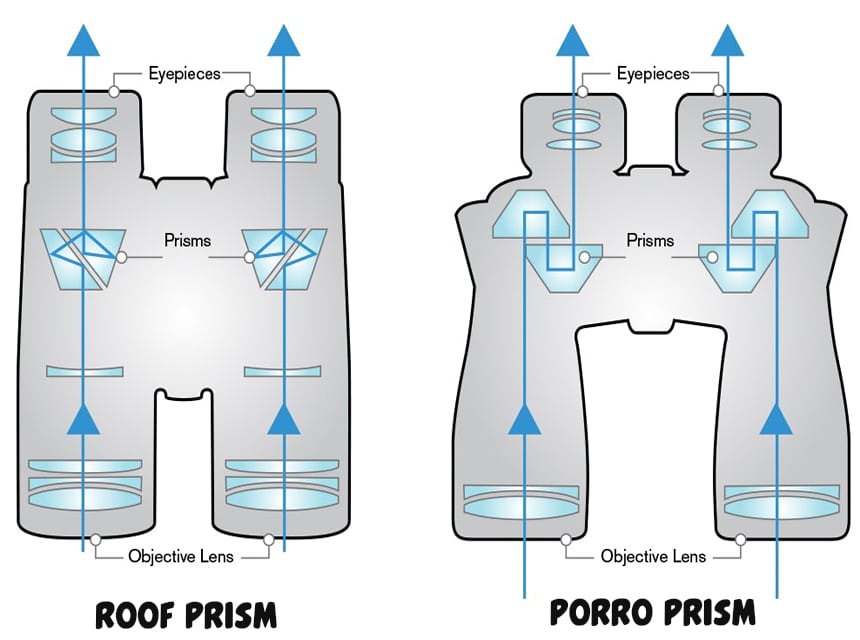
According to Spectroscopy Online Trusted Source Prisms A prism is an optical component that serves one of two major functions: it disperses light, or it modifies the direction (and sometimes polarization) of light. In some cases, a prism has more than one function, and they are discussed here. www.spectroscopyonline.com , prisms are optical components that either disperse light or modify the polarization or direction of light. In the case of binos, they modify the direction of light, so you get an upright image out of the ocular lenses.
Notably, there are two major types of prisms used in binoculars, namely Porro and Roof prisms. One example of Porro prism binos from the list above is the Pentax SP. Porro prisms invert and reverse light, allowing the user to receive the magnified image in the correct orientation.
The prism design gives the binos a zig-zag shape, and often the objectives are placed much further apart than the ocular lenses. This is in addition to the binos being quite bulky. While this can make Porro prism binos more fragile, they also have upsides, such as clearer images without needing much modification to the glass components. Of course, this makes Porro prism binos easier to produce, which inevitably brings the cost of owning them down.
As for roof prism binos like the Vortex Diamondback DB-217, you’ll typically see them with straight tubes because there’s no horizontal zig-zag path for the light to follow. The prism still reflects the light, but the mechanisms are much more complicated and intricate.
Even the glass components have to be superior to get the same image quality as Porro prism.
You’ll have to pay more for roof prism binos to get the same level of magnification as you get with Porro prism binoculars. However, they’re typically more durable, compact, lighter, and offer better weatherproofing.
Another element of the prisms is the type of glass used, with BAK-4, BK7, and SK15 being the most common. BK7 glass prisms are typically lower quality and more affordably priced, so you won’t find them in most high-end binos. BAK-4 prisms, like the one in the Celestron Granite, offer a higher refractive index and better images overall, so it’s common to see them in high end binos like the Leupold BX-4 Pro Guide.
Britannica Trusted Source refractive index | Definition & Equation | Britannica Refractive index, measure of the bending of a ray of light when passing from one medium into another. www.britannica.com describes the refractive index as a measure of how much light rays bend as they pass from one medium to another. As for SK15 glass, it has a higher refractive index than both BAK-4 and BK7. However, the light dispersion falls between the two. SK15 prisms aren’t as common in the market as the other two. Ultimately, the upsides and downsides of these prisms and the types of glass they use should help you determine which binos to buy.
As for the eye relief in binos, it’s the maximum distance from the ocular lens that users can see the entire viewing angle. This is especially crucial for people who wear glasses as sometimes they can only see part of the image in the ocular lenses. As such, binos like the Pentax SP are better suited for them as the large 20mm eye relief ensures they can see the entirety of the whole image.
However, if you don’t wear glasses and don’t mind pressing your face to the binos, the short eye relief should work just fine.
Simply put, the exit pupil is the width of light that exits the ocular lens and eyepiece and is often determined by factors such as the size of the objective lens and the magnification. Typically, the larger the exit pupil, the brighter the image in low light. Also, the exit pupil should always be larger than the pupil of your eye; otherwise, it may introduce darkness in some areas of the image.
Even among the best 12×50 HD binoculars, you’ll find the field of view differs. As such, you’ll have to be picky based on the intended use. Generally, a larger FOV is preferred since you can see more of the scene, which helps track objects if necessary.
However, higher magnification typically comes at the cost of the FOV, which can also introduce shakiness in the image. That said, if you want more magnification, you’ll have to contend with a narrower field of view, and if you want to see more of the scene and have an easier time tracking objects, a larger FOV is ideal.
The coating on the optics of the binoculars also affects image quality by enhancing the transmission of light. Typically, the more coating layers used, the higher the image quality. As such, you’ll see designations like fully coated, multi-coated, and fully multi-coated.
With fully coated binos, all lenses and glass elements have at least one coating layer. With multi-coated optics, you find multiple coating layers in at least one of the primary optical elements. Finally, with fully multi-coated optics, all the optical elements have numerous coating layers and thus have the best light transmission.
Of course, the higher the number and quality of coatings, the more expensive the binos will be, so you might need to compromise depending on your budget.
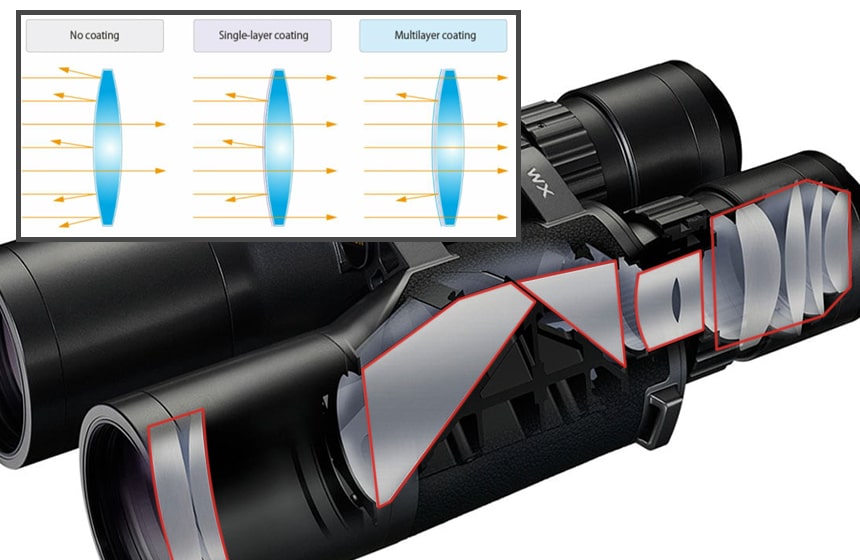
Next, check the construction materials, from the quality of the lenses to the durability of the chassis. Of course, you get better performance and more durable construction with higher quality materials.
Also, the weather resistance of the binos could determine how you use them. If your binos are not waterproof, you can’t use them in wet weather. The same is the case for foggy conditions if your binos are not fog proof. Of course, the level of weather resistance you choose should be determined by how you intend to use the binos. For instance, if you typically encounter fog while bird watching, it’s a good idea for the binos to be fog proof.
Size and weight also matter. Some binos are large and heavy, while others are small and lightweight. The former may be harder to carry, but they could also have some extra benefits due to size, so ruling them out altogether may not be ideal.
For most sports, hunting, and stargazing 12×50 binoculars, you’ll typically get the center focus where you can adjust the focus in both eyepieces using one focus knob in the middle. You can then adjust the diopter in one of your eyepieces to cater to the differences in your eyes. As for individual focus systems, you adjust the focus in each eyepiece individually. You should thus decide which focus system you prefer before committing to the purchase.
Also, check the quality of the eyecups. Ideally, they should offer comfortable space between your eyes and the ocular lenses during use. Additionally, if you wear glasses, they should cater to that by either being collapsible or allowing users to flip them out of the way.
To summarise, we consider the Celestron Granite, Leupold BX-4 Pro Guide, and Nikon Prostaff 5 as the best options in this category. The Celestron Granite binos feature fully multi-coated optics in their roof prism design. They also provide an impressive field of view, making tracking objects at 12x magnification easier.
The Leupold BX-4 Pro Guide is easily one of the best 12×50 binoculars, thanks to the Leupold BX-4 Pro Guide coating system. This works in conjunction with the roof prism design and the superior calcium-fluoride lenses to provide optimal image quality.
As for the Nikon Prostaff binos, they provide similar levels of magnification and image quality in a more petite body. This makes them ideal for bino users who travel a lot as they’re easier to pack without sacrificing other capabilities.

